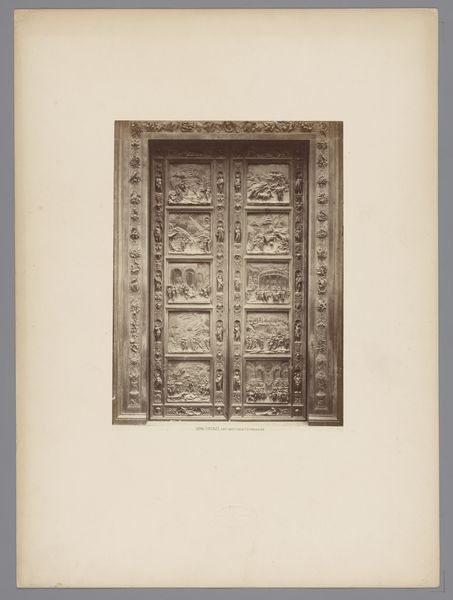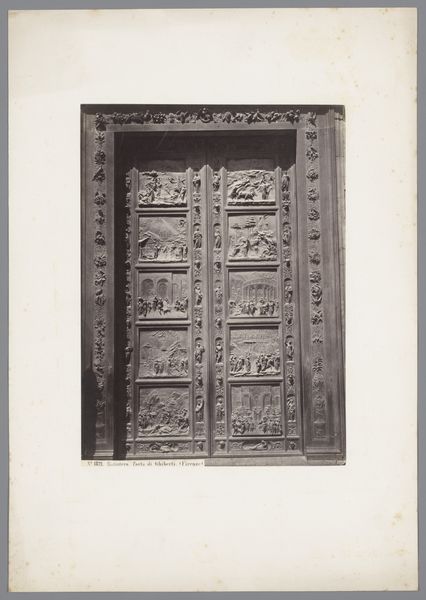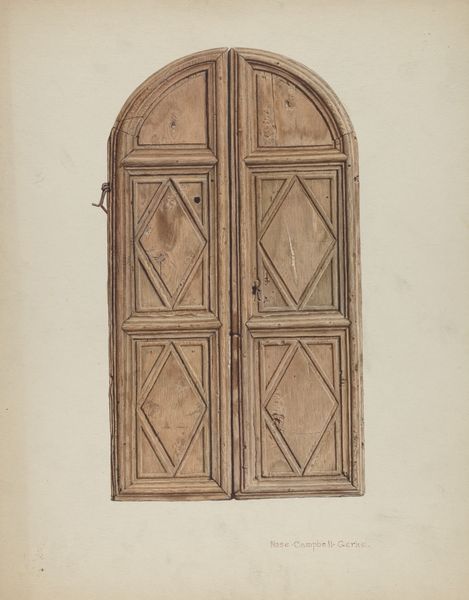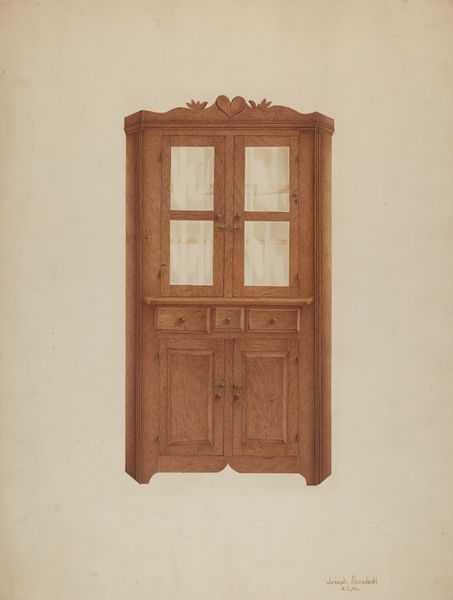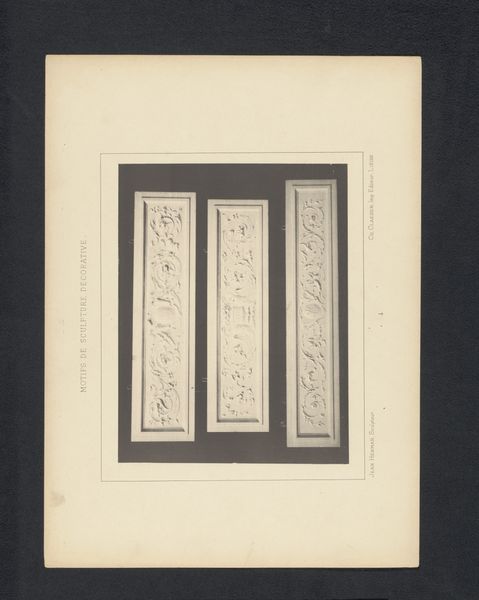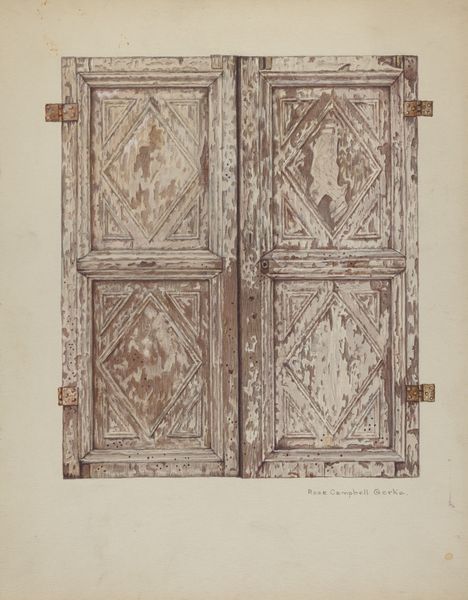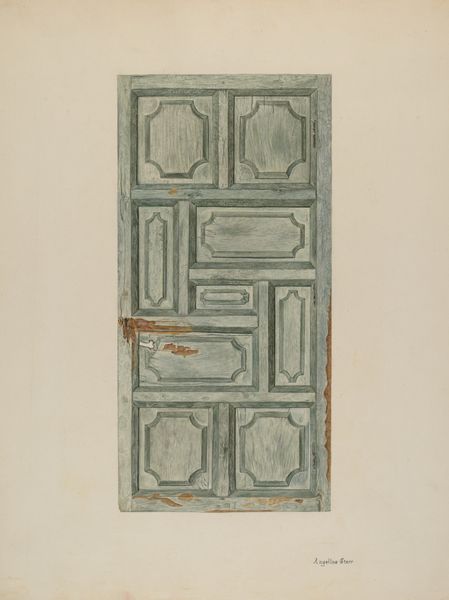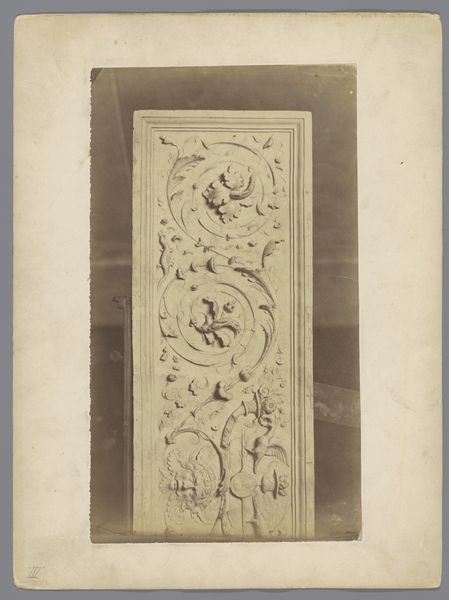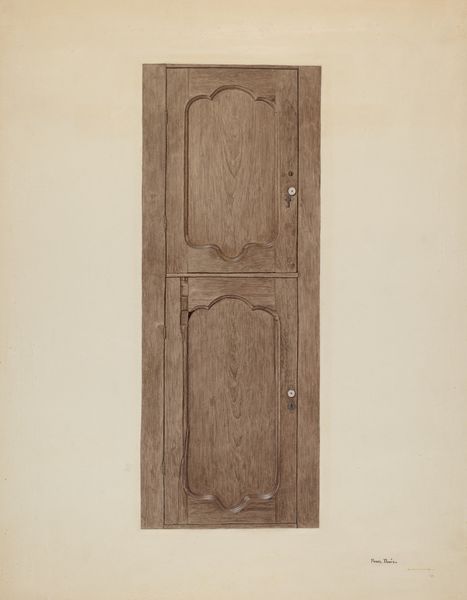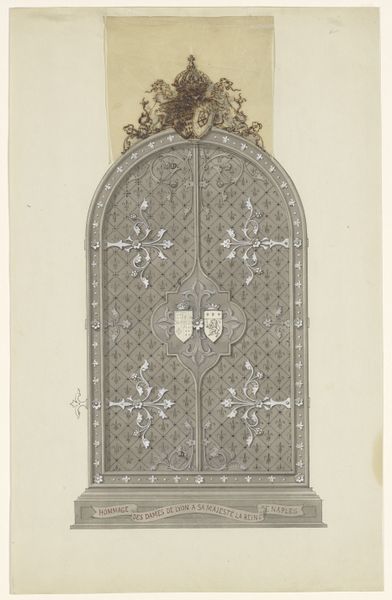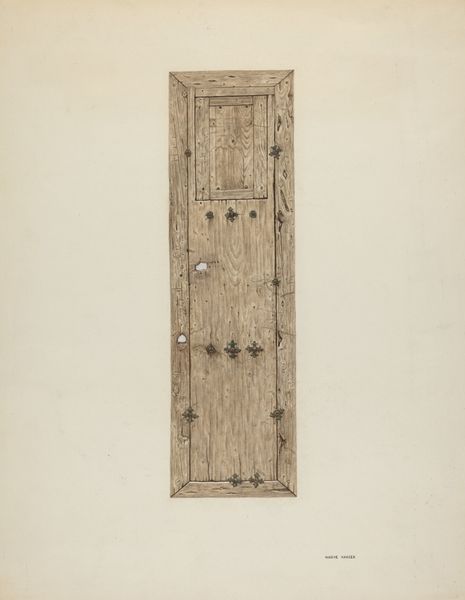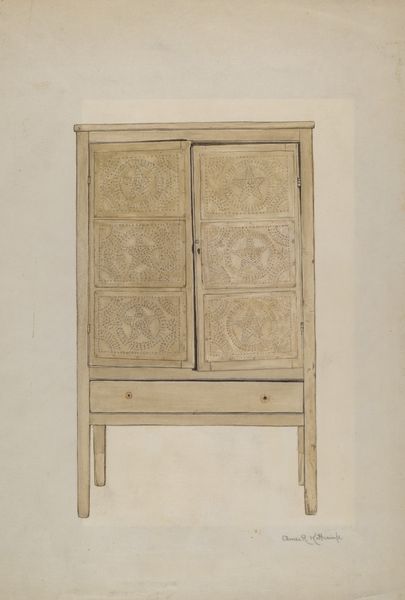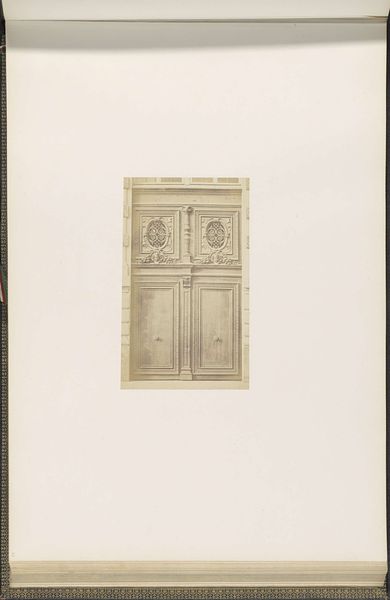
Gebeeldhouwde deuren van Lorenzo Ghiberti in het Baptisterium van de kathedraal in Florence, Italië 1851 - 1900
0:00
0:00
print, relief, bronze, photography, sculpture
#
narrative-art
# print
#
relief
#
bronze
#
photography
#
geometric
#
sculpture
#
italian-renaissance
Dimensions: height 421 mm, width 315 mm
Copyright: Rijks Museum: Open Domain
Curator: Here we have a photographic print depicting the sculpted doors of the Florence Baptistery, made sometime between 1851 and 1900, capturing Lorenzo Ghiberti's bronze relief work. Editor: The instant impression is one of immense labor. Look at the sheer amount of detail; it speaks volumes about the craftsmanship of the Renaissance and the investment of time and material involved. Curator: Absolutely. Let's delve deeper into the imagery. These aren't just decorative elements. Each panel likely depicts scenes from the Bible, carrying symbolic weight about faith, redemption, or perhaps even moral guidance. It begs the question of what meaning they held for people of the time. Editor: I agree, and to add to that, the medium, bronze, has incredible historical and cultural significance. Consider the foundry practices, the societal organization required to extract and refine these materials. Even its reflective surface could allude to different philosophical and religious notions. Curator: What intrigues me most is how geometric forms were used. It suggests the renaissance's revival of classical styles which has further, broader associations with notions of rational thought and idealized beauty, serving specific symbolic functions. Editor: Well, you can see it certainly communicates wealth and devotion, both human elements. But look at the wear. Those doors were actively used, experienced touch of the people as well as constant exposure to atmospheric change over time and place, a continuous process involving nature. The photograph we have isolates them in one instant, absenting from the door's rich existence. Curator: An excellent point. Thinking about the location where it was initially constructed, in a communal baptistery for many Christians to use, is as significant as our perception now in a gallery space. Editor: It really is the meeting of faith and the societal function in reality and art. Understanding the tangible and symbolic meanings provides an insightful dialogue with the artwork across time.
Comments
No comments
Be the first to comment and join the conversation on the ultimate creative platform.
